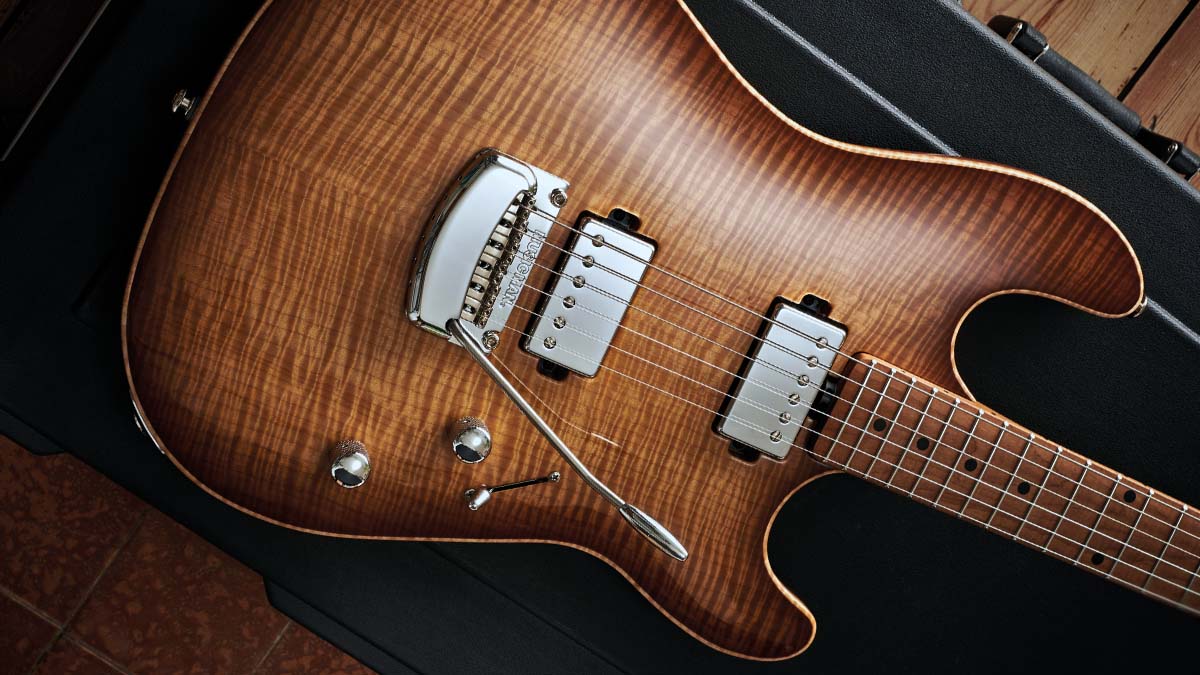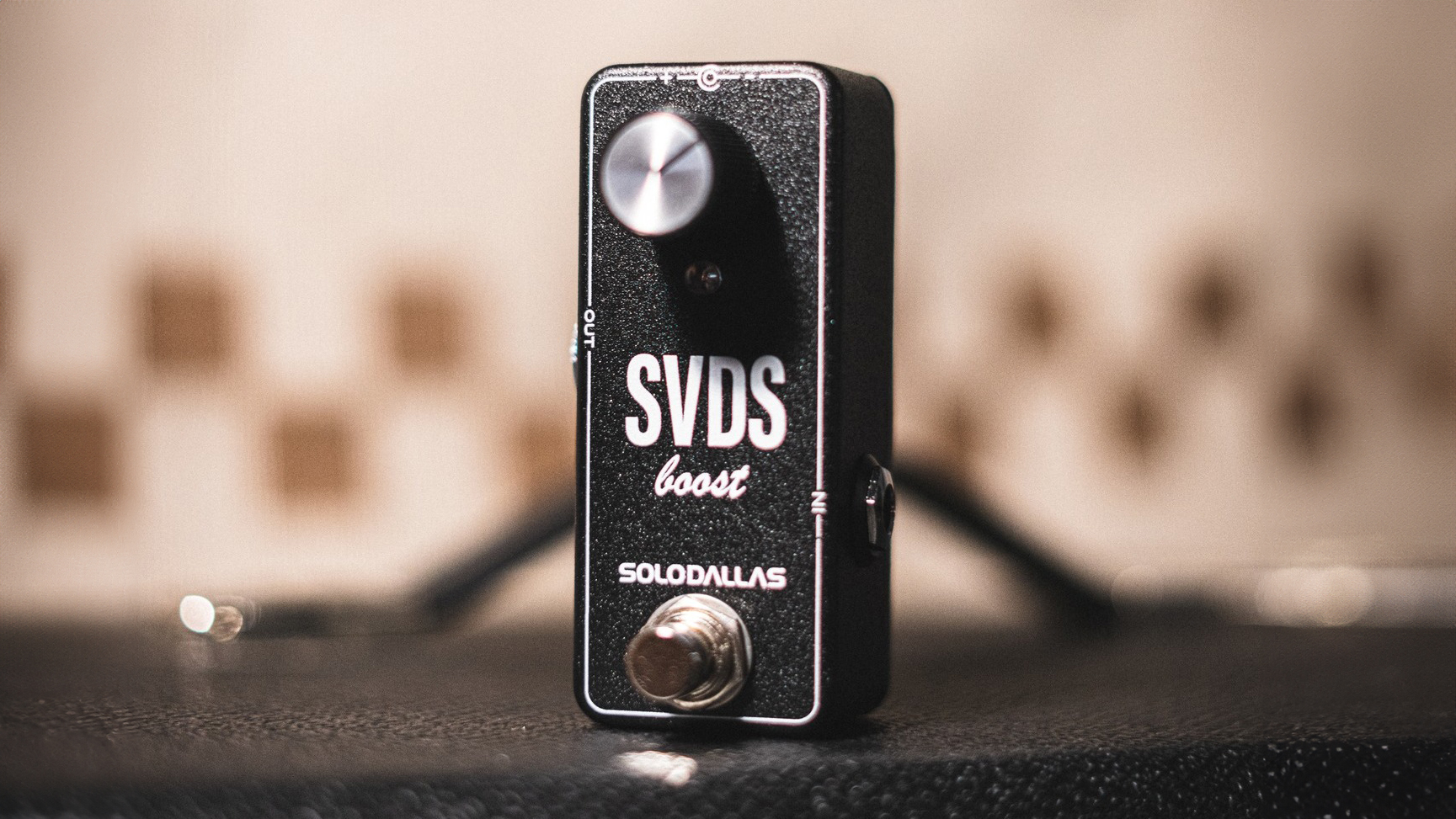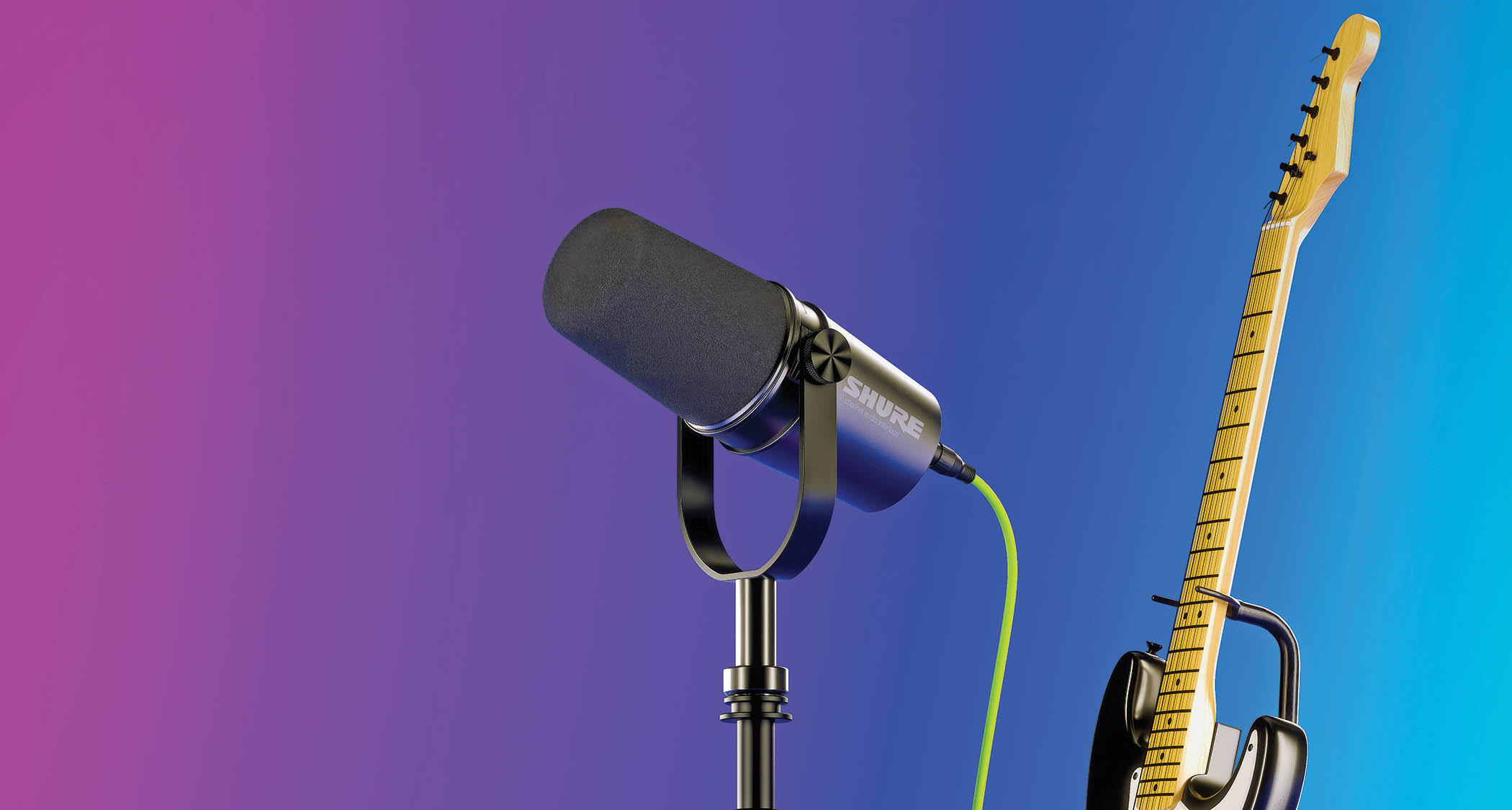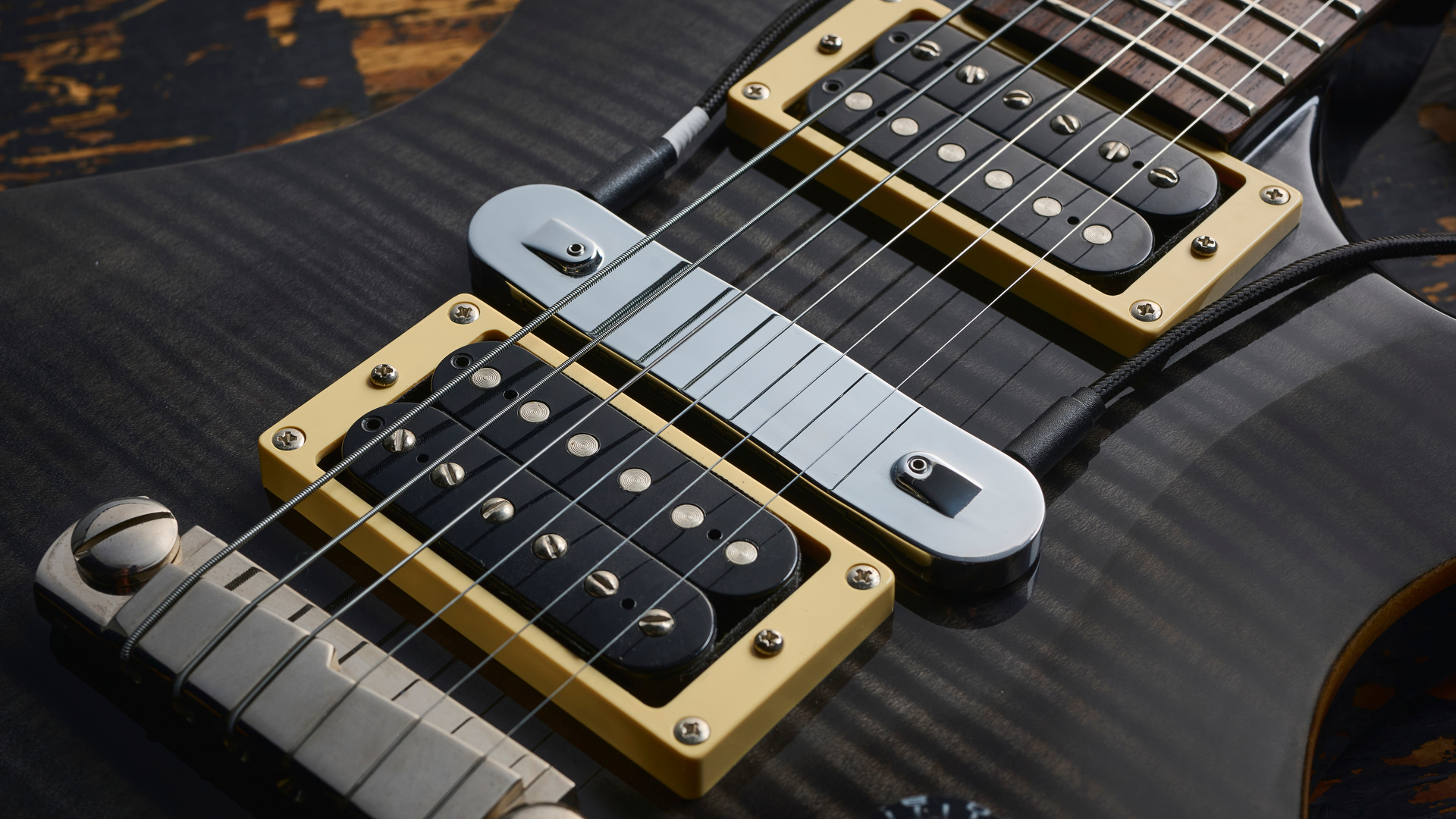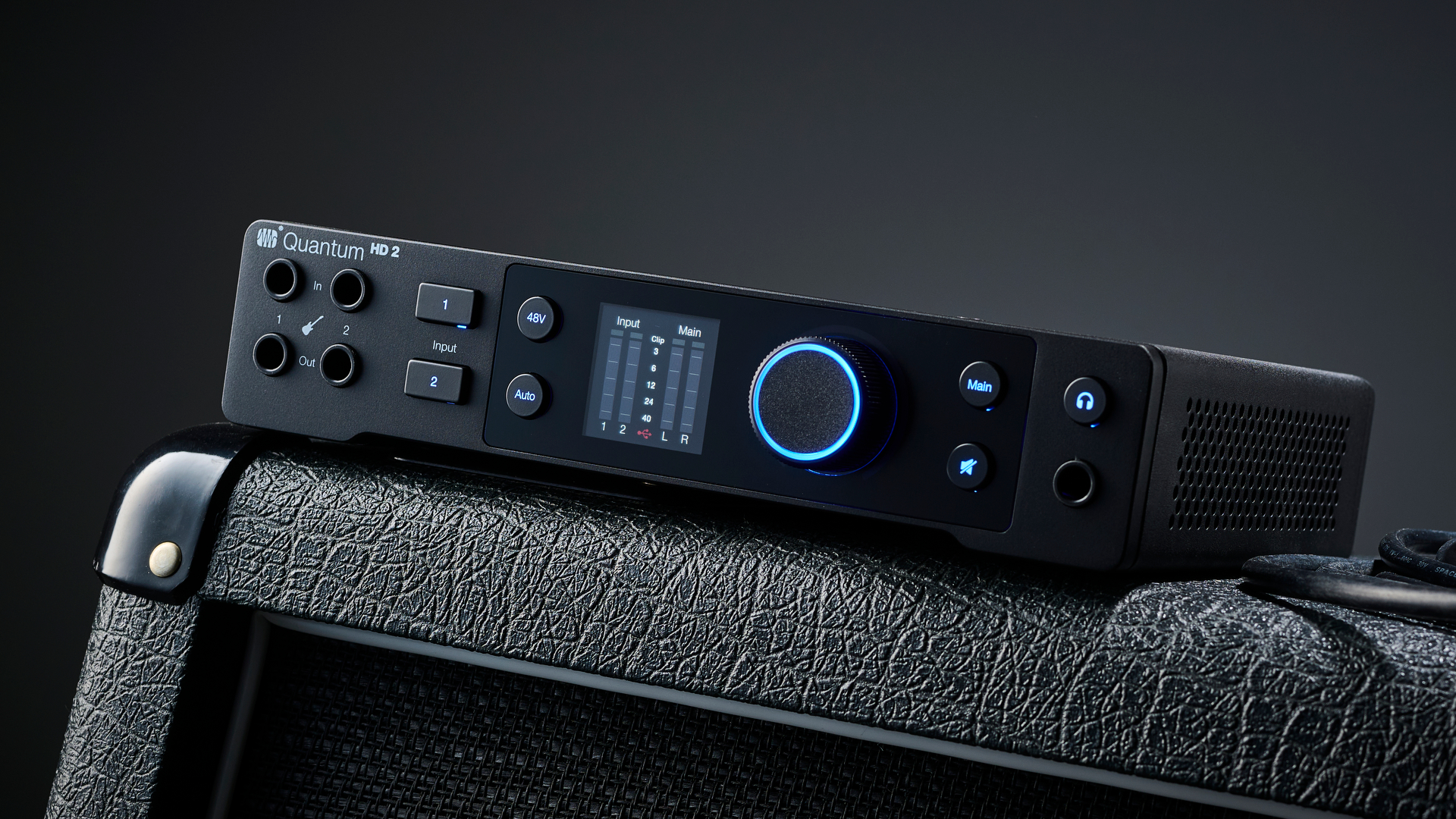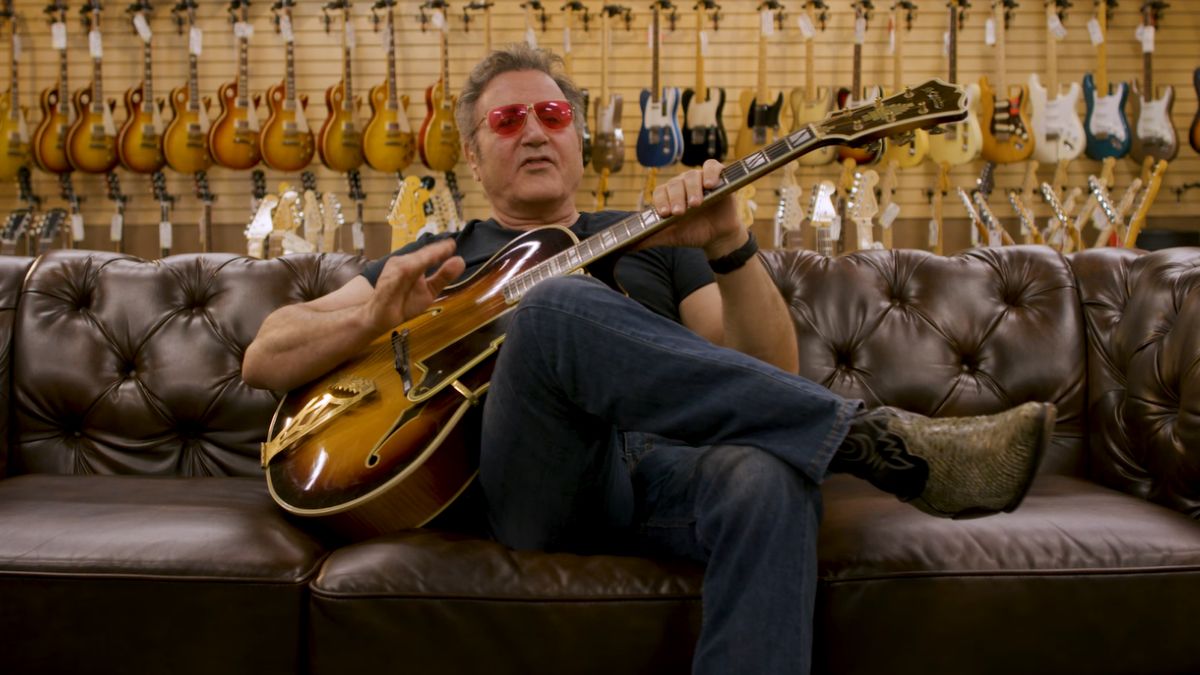Guitar World Verdict
The Sabre might not immediately scream “Music Man” but it does live up to its weaponised name tag. Yes, those who choose to live by this sword will be very happy indeed.
Pros
- +
Outstanding looks.
- +
Stellar playability.
- +
Great set of pickups.
- +
The weight is in the sweet spot, too.
Cons
- -
The slim neck and modern voice may discourage some.
You can trust Guitar World
We have to ’fess up here. If we hadn’t eyeballed the headstock of the new for 2020 Sabre, we’d never have guessed it was built by Music Man.
It’s easy to pick a Music Man StingRay or Axis out of a line-up. The body shapes are a dead giveaway, not to mention the StingRay’s conspicuous control plate. The St Vincent model is too outlandish to go incognito, and the Albert Lee and Steve Lukather signatures couldn’t mask their origins if they hid behind big sunglasses and a Magnum PI moustache.
The same could be said of the new Sabre’s illustrious if short-lived ancestors. The original Music Man Sabre made its debut in 1978 and was in production for a couple of years. Aside from a better known bass variant, the guitar was available in two formats, the imaginatively titled I and II.
Designed by Leo Fender and George Fullerton shortly before they scuttled off to found G&L, the I had a 12-inch fingerboard radius and regular-size frets. The II featured an old-school 7.25-inch radius, with skinnier vintage-style frets to match. Both models were spec’d with an active preamp, two-band EQ, and a phase reversal switch.
The 'subtly carved' flame maple top has exposed edges that act as pretty body binding. Just like PRS
In fact, aside from a Strat-ish chassis, bolt-on neck and HH pickup layout, the new Sabre has just about zero in common with those original electric guitars. Oh well, out with the old… Like any ‘S-style’ guitar with direct-mount humbuckers, the Sabre is also a descendent of Eddie Van Halen’s Frankenstrat.
Yet while Eddie’s old amigo looked like it had been dragged through a hedge backwards, our Sabre is way more refined, like it gets its clobber from a tailor on Savile Row. The spec sheet opens with a okoume body crowned with a 13mm thick slice of bookmatched flame maple, finished in high-gloss polyester.
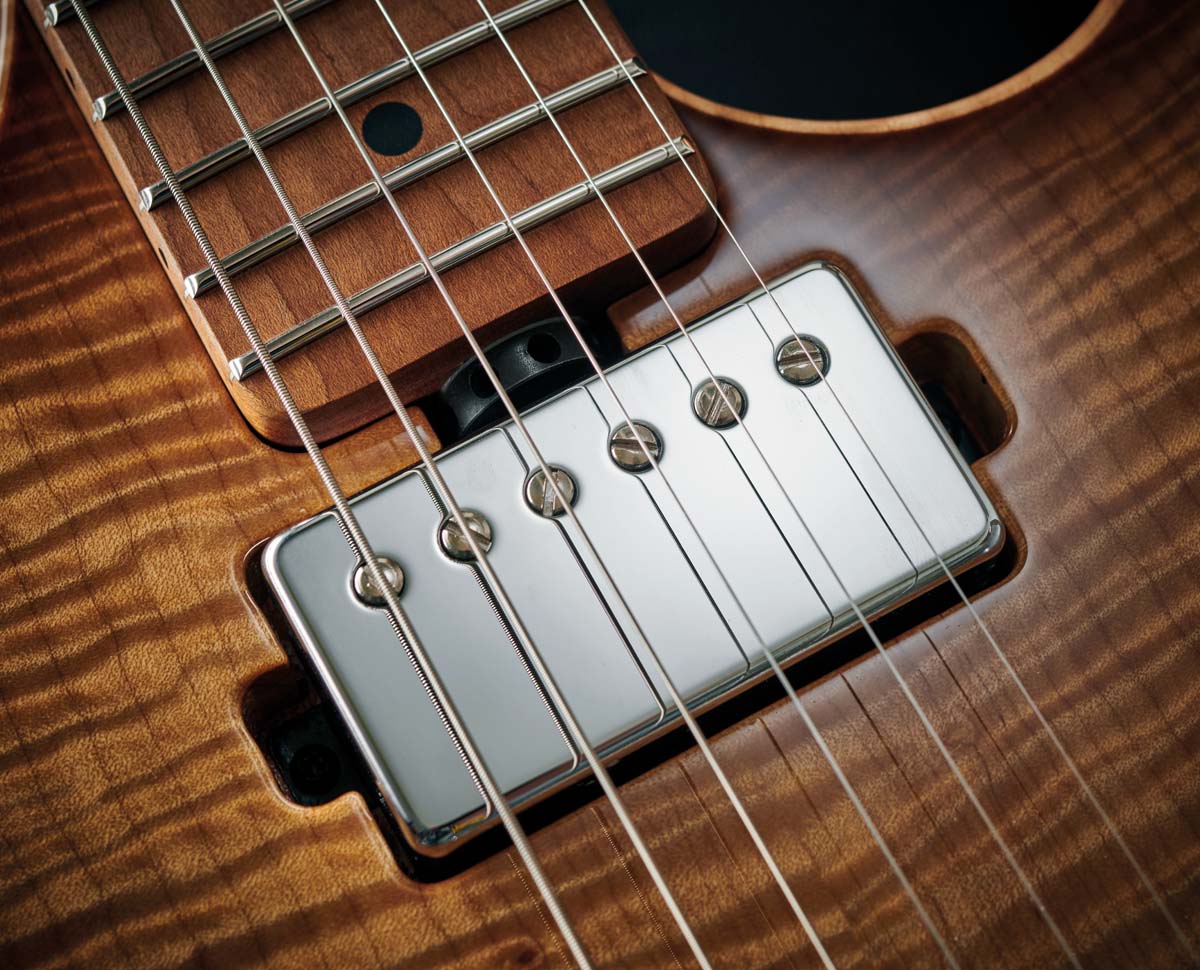
Aside from the easily recognisable headstock shape, another classic Music Man feature is the easily accessible truss rod adjuster. Housed next to the front pickup, this small wheel allows you to make adjustments without removing the neck.
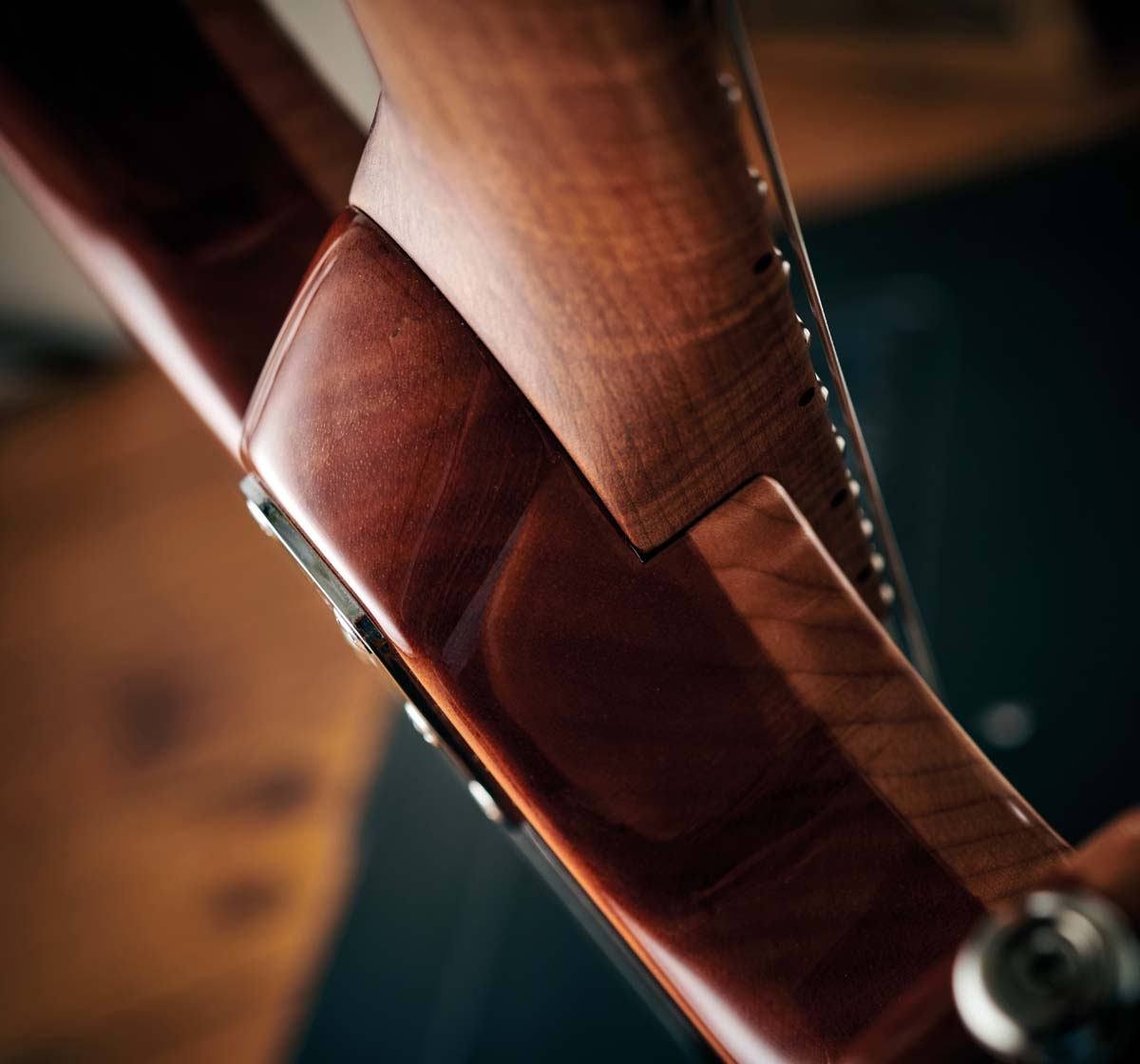
It’s not just the medium-profile frets, slim neck profile and easy 254mm (10-inch) fingerboard radius that makes this guitar a joy to work with. Upper-fret access on the Sabre is excellent thanks to a sculpted heel. The deep treble side cutaway helps, too
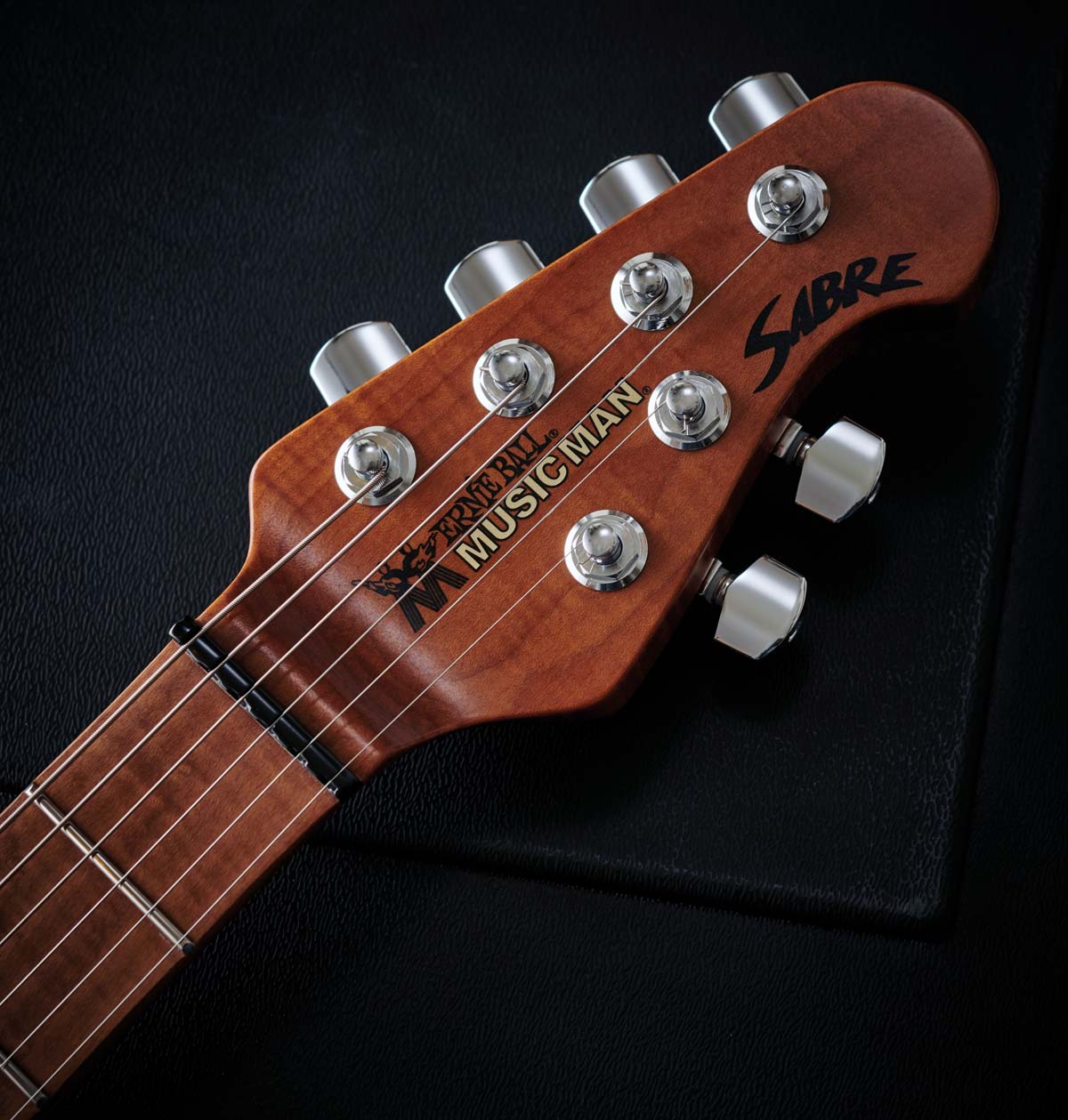
The new Sabre fences the now classic ‘four over two’ headstock layout. Like the rest of the neck, there’s a hand-rubbed gun stock oil and wax finish that brings out the subtle figuring of the flame maple. You’ll also find a beautifully cut compensated top nut to aid intonation.
Okoume is an African hardwood that’s sustainable and provides aesthetics and weight that might convince some that they’re dealing with mahogany. The “subtly carved” flame maple top has exposed edges that act as pretty body binding. Just like PRS.
As previously mentioned, the humbucking pickups are direct-mounted. Both units are wound in-house. The bridge pickup is loaded with Alnico V magnets with an quoted DCR of 18kohms. The neck pickup runs a Ceramic 8 magnet with a reading of 12.2kohms.
The wiring loom offers none of the over-engineered exuberance of a 70s Sabre. Here, all you’ll find is a master volume, master tone and a five-way pickup selector switch. Peeking inside the control cavity, you’ll uncover a well-ordered layout protected by graphite acrylic resin paint and an aluminium cover plate to ward off electrical hum.
The vibrato cover plate is also made from aluminium. We were surprised to see that these plates are not recessed. That little craftsman’s touch is something we’d expect on a guitar of this value. You must have noticed this guitar’s ‘Modern Tremolo’.
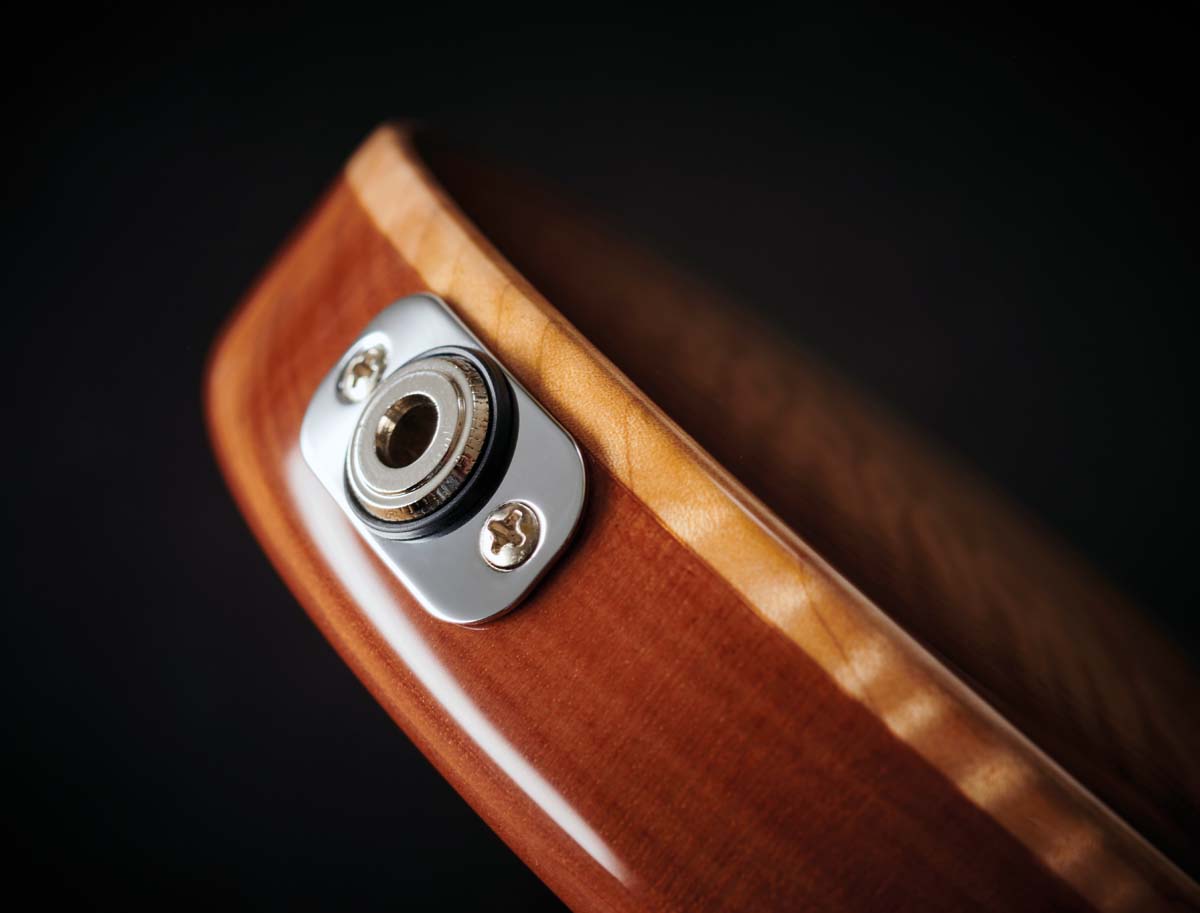
Every part of the Sabre feels well thought out and engineered; that’s even evident on the bits you don’t normally notice. While we’re impressed by the tidiness and noise-suppressing features in the control cavity, we also appreciate the robust jack plate. It doesn’t feel like there’s much chance of it working loose
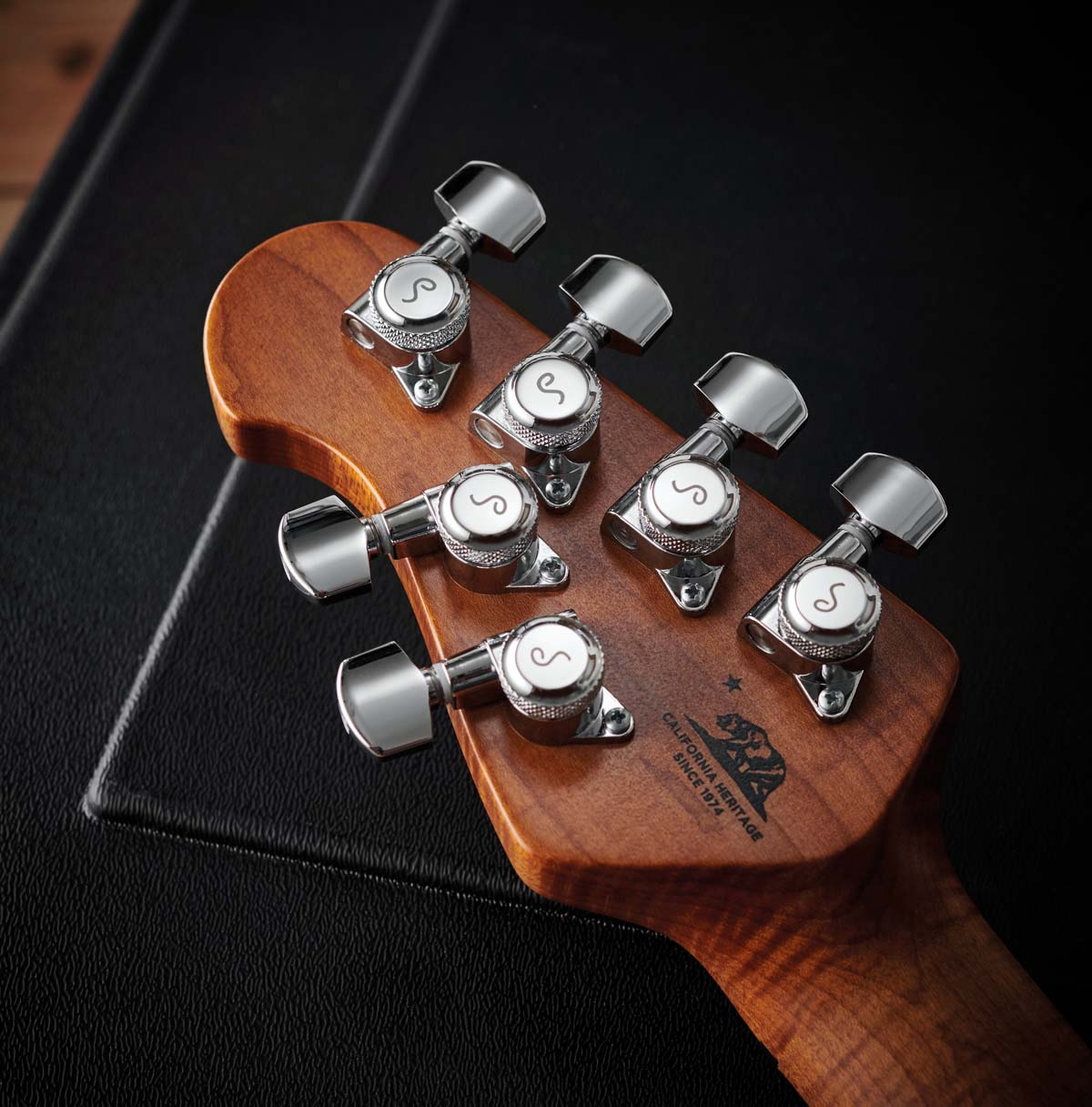
While tuning stability is excellent thanks to the stiffer roasted maple neck and that well sorted compensated top nut, the biggest shout-out goes to the Schaller M6-IND locking tuners. There are no string trees or bars to snag the strings.
Music Man describes it as having a “crescent cover” and vintage bent steel saddles. We’d agree with all that. The cover is reminiscent of the ashtray thing that came with old Strats and their Custom Shop doppelgängers.
It’s possible to palm-mute with the Sabre’s cover in place, and you can also intonate the guitar with it in place. There are six access holes. If it gets in your way, it can be removed by undoing a couple of screws from inside the vibrato cavity – it doesn’t just pop on and off like the old Fender covers.
That just leaves the push-in vibrato arm wanting of a mention. It’s all good news there, too. There’s no thread to strip and the arm obediently stays put wherever you abandon it. Moving in to the pointy bit, the 648mm (25.5-inch) bolt-on roasted figured maple neck is held to account by the body with five screws.
There’s bags of definition in those coils. You can hear every note, and harmonics ping off the ’board like fizzy bottle tops
Playability is maximised by a 254mm (10-inch) fingerboard radius, 22 high-profile medium stainless-steel frets, and a sculpted neck/body join. A hand-rubbed gun stock oil and wax finish helps you avoid any sticky situations. Tuning stability is maintained with a slippery graphite compensated top nut and a set of Schaller M6-IND tuners.
The headstock is, of course, your now iconic ‘four over two’ format. The original Sabres came with the Fender six-in-line tuner design.
Feel & Sounds
Incredibly, we’ve reached this point without a single sword pun, so let’s say that the Sabre’s neck feels rapier thin.
If you’ve ever heard the expression ‘this thing plays itself’ then this is your opportunity to experience that first hand. Despite being supplied with Ernie Ball Slinkys 0.010 to 0.046-gauge strings, the feel is super-light. We figured incorrectly that we were dealing with a compound radius ’board here. The fact is, this guitar is just very well set up.
Brandished at an amplifier’s clean channel, the sustain is immediately impressive. First impressions? These humbuckers are full, punchy-sounding characters, but there’s a lot of tonal variety on tap. At either end of its travel, the five-way selector switch offers access to the bridge or neck ’bucker running solo in series.
Position 2 is the coil-split outer coils on each pickup in parallel. The third position is both ’buckers on full in parallel. Finally, you get a coil-split option with just the inner coils of the bridge and neck pups.
The Sabre presents itself as a guitar for modern players. The high-output bridge pup is mouthy enough for metal and its countless sub genres. There’s bags of definition in those coils. You can hear every note, and harmonics ping off the ’board like fizzy bottle tops
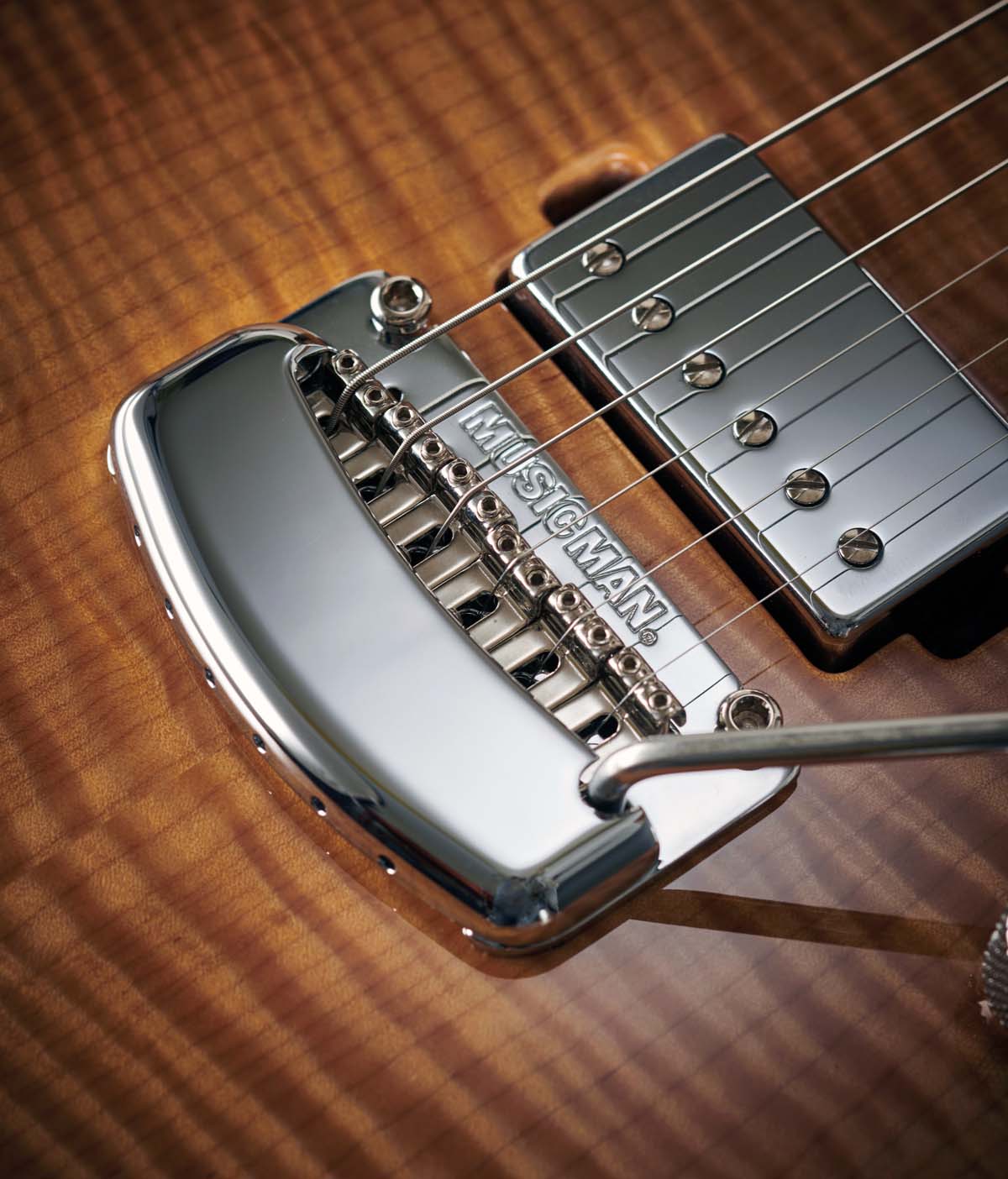
The Modern Tremolo bridge features a contemporary two-point operation, six vintage-style bent steel saddles, and a smart-looking ‘crescent cover’.
You can palm-mute the strings and intonate the guitar with the cover in place, but it can be removed. It’s held in situ with a couple of screws.
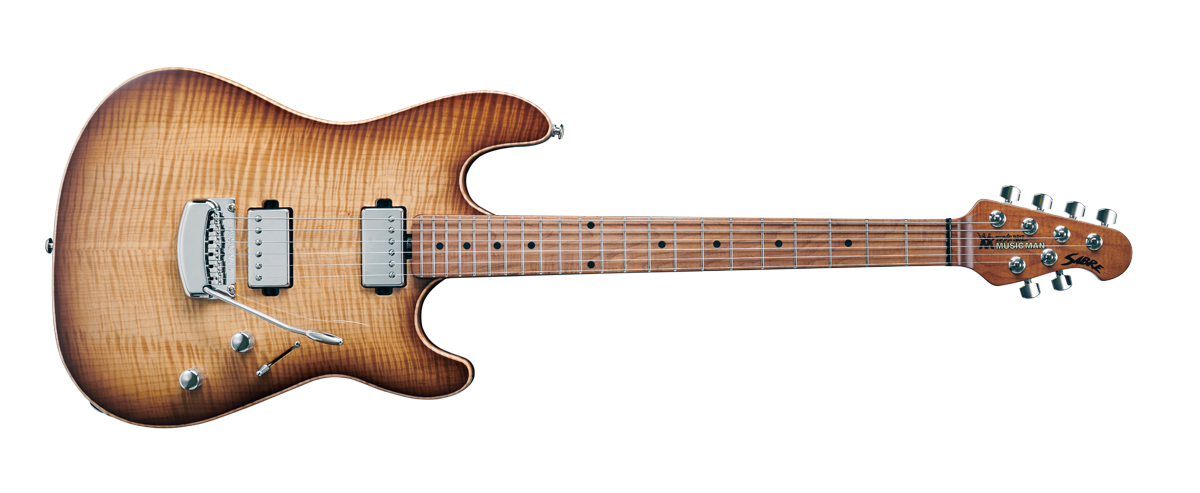
Engaging the coil-split modes introduces some woodiness, but it doesn’t come across as retro. It’s more like laser-cut than hand-crafted. The two coil-split modes might appear pretty similar, but there is a discernible increase in bottom-end when you employ the outside coil option.
The inside coil setting gets you some way down the road to an in-between Strat thing that’s perfect for that funky stuff, if you’re guilty of doing that sort of thing.
While we were initially sceptical of the neck pickup’s ceramic magnets, we’re sold on the sharp definition this thing pumps out. Bottom-end is all present and correct, but there’s a sliver of top-end that lays waste to any muddiness, regardless of the amount of gain on show.
Verdict
What’s our stance after all this Sabre rattling? We’re exceptionally happy if you must know. The Sabre is hard to fault on any level. In other words, this gem represents contemporary guitar building at its finest.
The Sabre looks fantastic and practically plays itself, with fit and finish that’s tidier than Marie Kondo’s sock drawer. It also comes with a lightweight but tough moulded hard case. These days, £3,339 will get you wrapped around any number of high-spec electric guitars.
The inside coil setting gets you some way down the road to an in-between Strat thing that’s perfect for that funky stuff, if you’re guilty of doing that sort of thing
That choice is narrowed if your heart’s set on a vintage reissue from the likes of Fender and Gibson. There are, however, many guitarists looking for something with all mod cons, and all the faultless playability and expanded tone palette that implies.
The Sabre is the guitar that can compete with Grosh, Suhr and the like. It might not immediately scream “Music Man” but it does live up to its weaponised name tag. Yes, those who choose to live by this sword will be very happy indeed.
Specs
- PRICE: $3,599 / £3,399 / $3,199
- ORIGIN: USA
- TYPE: Offset double-cutaway solidbody electric
- BODY: Okoume with bookmatched flame maple top
- NECK: Roasted figured maple, bolt-on
- SCALE LENGTH: 648mm (25.5”)
- NUT/WIDTH: Graphite/43mm
- FINGERBOARD: Roasted maple with dot inlays and hand-rubbed oil and wax finish, 254mm (10”) radius
- FRETS: 22, high-profile medium stainless steel
- HARDWARE: Chrome ‘Modern Tremolo’ 6-saddle bridge with push-in arm, Schaller M6-IND locking tuners
- STRING SPACING, BRIDGE: 54mm
- ELECTRICS: 2x Music Man Custom Wound humbuckers, master volume, master tone, 5-way pickup selector blade switch
- WEIGHT (kg/lb): 3.5/7.9
- OPTIONS: None. The Ball Family Reserve edition costs £3,999 / $3,799
- RANGE OPTIONS: Dual-humbucker w/ vibrato options: StingRay RS, Valentine Tremolo and Steve Lukather (from £2,399 / $2,149)
- LEFT HANDERS: No
- FINISHES: Honey Suckle (as reviewed), Cobra (roasted maple ’board, black hardware), Boujee Burst and Blue Moonstone (ebony ’boards, chrome hardware). High gloss polyester (body), hand-rubbed oil and wax finish (neck)
- CONTACT: Ernie Ball Music Man
Ed Mitchell was Reviews Editor on Total Guitar magazine from 2003, and his guitar-modding column, Ed’s Shed, appeared in print on both sides of the Atlantic (in both Total Guitar and Guitar World magazines). He was the Editor of The Blues Magazine from 2012-16, and a contributor to Guitarist, Classic Rock and Louder. He died in October 2022, aged 52. Between them, the websites Guitar World, Louder and MusicRadar host over 400 of his articles – among them interviews with Billy Gibbons, Paul Weller, Brian Setzer, profiles on Roy Buchanan, Duane Allman and Peter Green, a joint interview with Jimmy Page and Jack White, and dozens of guitar reviews – and that’s just the ones that made it online.
“My brother's trying to knock Norm down in price. He's worth $800 million. He goes, ‘I'll give you a bottle of whiskey on top’”: Frank Stallone on the prized vintage Epiphone that Sylvester bought him – and the guitar's mysterious origins
“More people play stop-tails than guitars with locking tremolos. We dig both”: EVH delivers on its hardtail promise and launches the Wolfgang Standard T.O.M. – which vows to take Eddie's legacy to new heights
